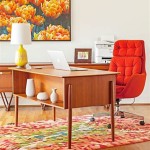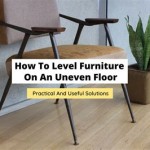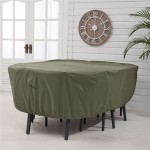How to Get a Puppy to Stop Biting Furniture
Puppyhood is a period of rapid development and exploration, and for many puppies, this exploration involves the enthusiastic use of their mouths. Biting, nipping, and chewing are natural behaviors for young dogs, but when these behaviors are directed at furniture, it can quickly become a frustrating and destructive problem for pet owners. Understanding the reasons behind this behavior and implementing effective training strategies are crucial to redirecting the puppy's chewing instincts towards more appropriate outlets.
The urge to chew is often driven by several factors. Teething, which occurs between roughly three to six months of age, is a significant contributor. As new teeth erupt, the gums can become sore and inflamed, and chewing provides relief from this discomfort. Beyond teething, puppies also explore their environment through their mouths, similar to how human babies explore with their hands. This exploration allows them to learn about textures, tastes, and the physical properties of different objects. Finally, boredom and anxiety can also lead to destructive chewing as a means of self-soothing or releasing pent-up energy.
The following sections detail key strategies for mitigating furniture biting in puppies, focusing on providing appropriate alternatives, managing the puppy's environment, and implementing effective training techniques.
Providing Appropriate Chew Toys
One of the most effective ways to curb furniture biting is to provide a variety of appealing and appropriate chew toys. The goal is to offer alternatives that are more attractive to the puppy than the furniture itself. The selection of chew toys should consider the puppy's size, chewing style, and preferences. Offer a range of textures and materials to maintain the puppy's interest. Options include rubber toys, rope toys, dental chews, and plush toys (choose durable plush toys designed for dogs; avoid toys with small parts that can be easily swallowed).
Rotate the available toys regularly to prevent boredom. If the puppy has access to the same toys all the time, they may lose interest and seek out new, more exciting chewing targets, such as your dining room table legs. Keep a selection of toys in a designated area and switch them out every few days. This makes the toys seem new and engaging, encouraging the puppy to choose them over furniture.
Introduce chew toys in a positive and encouraging manner. Entice the puppy to interact with the toys by rubbing them with peanut butter (ensure it's xylitol-free), dog toothpaste, or other dog-safe flavorings. Engage in interactive play with the toys, such as tug-of-war or fetch, to build positive associations. Praise the puppy enthusiastically when they chew on the toys and offer treats as positive reinforcement. Make the chew toys the source of fun and reward to solidify their appeal.
Pay close attention to the puppy's chewing style. Some puppies are gentle chewers, while others are aggressive and destructive. Choose toys that can withstand the puppy's chewing intensity. Regularly inspect the toys for damage and discard them if they are broken or pose a choking hazard. Consider offering frozen toys or toys soaked in water and then frozen. The coldness can soothe sore gums during teething and provide a longer-lasting chewing experience.
Consider using puzzle toys that dispense treats. These toys require the puppy to work for their reward, providing mental stimulation and extending the chewing session. Puzzle toys can help alleviate boredom and redirect the puppy's focus away from furniture. Fill the puzzle toy with kibble or small training treats to keep the puppy engaged.
Managing the Puppy's Environment
Environmental management plays a critical role in preventing furniture biting. By limiting the puppy's access to furniture and creating a safe and stimulating environment, you can significantly reduce the opportunities for destructive chewing. Confinement strategies, such as crate training or using playpens, are valuable tools for managing a puppy's access to the house.
Crate training provides the puppy with a safe and secure den, while also preventing them from roaming unsupervised and potentially damaging furniture. Introduce the crate gradually and make it a positive experience. Place comfortable bedding, chew toys, and treats inside the crate. Never use the crate as a punishment. The crate should be a haven for the puppy, not a place of fear or confinement. Gradually increase the amount of time the puppy spends in the crate. Supervise the puppy whenever they are outside of the crate, especially during the initial stages of training.
Playpens are another effective way to restrict the puppy's access to furniture while still allowing them some freedom of movement. Set up the playpen in a central location in the house, where the puppy can still interact with the family. Provide the playpen with toys, water, and a comfortable resting area. Similar to crate training, introduce the playpen gradually and make it a positive experience. Use the playpen when you are unable to directly supervise the puppy.
Consider making furniture less appealing to the puppy. Cover furniture with blankets or sheets, particularly when you are not able to supervise the puppy directly. This can make the furniture less tempting as a chewing target. Apply bitter apple spray or other dog-safe deterrents to furniture legs and edges. These products have a taste that dogs generally find unpleasant, discouraging them from chewing. Reapply the spray regularly, as the taste and effectiveness can diminish over time. Test the spray on a small, inconspicuous area of the furniture first to ensure it does not cause discoloration or damage.
Ensure the puppy has plenty of opportunities for physical and mental stimulation. A tired puppy is less likely to engage in destructive chewing. Provide daily exercise, such as walks, playtime, and interactive games. Engage the puppy in training sessions to provide mental stimulation and reinforce positive behaviors. Hide treats around the house and encourage the puppy to use their nose to find them. This activity provides mental enrichment and can help tire the puppy out.
Implementing Effective Training Techniques
Consistent and positive reinforcement training is essential for teaching a puppy to stop biting furniture. Avoid using punishment-based methods, as these can create fear and anxiety, potentially leading to other behavioral problems. Focus on redirecting the puppy's attention and rewarding desired behaviors. A key command to teach is "leave it," which instructs the puppy to ignore a specific object or activity.
To teach the "leave it" command, start by holding a treat in your closed fist. Show the fist to the puppy and say "leave it." The puppy will likely attempt to lick, paw, or bite at your hand to get to the treat. Ignore these attempts. Once the puppy stops trying to get the treat, even for a brief moment, immediately open your hand and give them a different, higher-value treat from your other hand. Repeat this process several times. The goal is for the puppy to understand that ignoring the object in your hand results in a better reward.
Once the puppy understands the concept of "leave it" with your hand, progress to using the command with a chew toy or other object on the floor. Place the object on the floor and say "leave it." If the puppy moves towards the object, cover it with your foot or hand and repeat the command. When the puppy moves away from the object, even slightly, reward them with a treat and praise. Gradually increase the distance between the puppy and the object. Ultimately, the goal is for the puppy to reliably "leave it" regardless of the distance or temptation.
When you catch the puppy biting furniture, interrupt the behavior with a firm "no" or "uh-oh." Avoid yelling or using a harsh tone, as this can frighten the puppy. Immediately redirect the puppy's attention to an appropriate chew toy. Once the puppy is chewing on the toy, praise them enthusiastically and offer a treat. This teaches the puppy that chewing on the toy is a more rewarding behavior than chewing on furniture. Consistency is crucial. Every time you catch the puppy biting furniture, interrupt the behavior and redirect them to a chew toy.
Enlist the help of a professional dog trainer or behaviorist if you are struggling to manage the puppy's furniture biting. A professional can provide personalized guidance and address any underlying behavioral issues that may be contributing to the problem. Group classes and private training sessions can provide valuable training opportunities and socialization experiences for both you and your puppy. Early intervention is key to preventing the behavior from becoming ingrained.

How Do I Stop My Puppy From Chewing On Furniture

Tips To Stop Your Dog Biting The Furniture

How To Stop A Puppy From Chewing Everything In Sight Petmd

How To Protect Your Furniture From Pets Amish Outlet Store

Stop Your Dog From Chewing Furniture 8 Effective Home Remedies

How To Stop Your Dog From Chewing Furniture Pets24

Stop Dog Chewing Furniture Home Remedies Made Easy Awokenk9

How To Keep Puppies From Chewing On Furniture The Best Strategies Online Dog Trainer

How To Keep Puppy From Chewing Your Furniture New Jersey Dog Training Boarding Dan Gentile

Dog Chewing Furniture 5 Causes 7 Fixes You Must Try Petbuds
See Also








